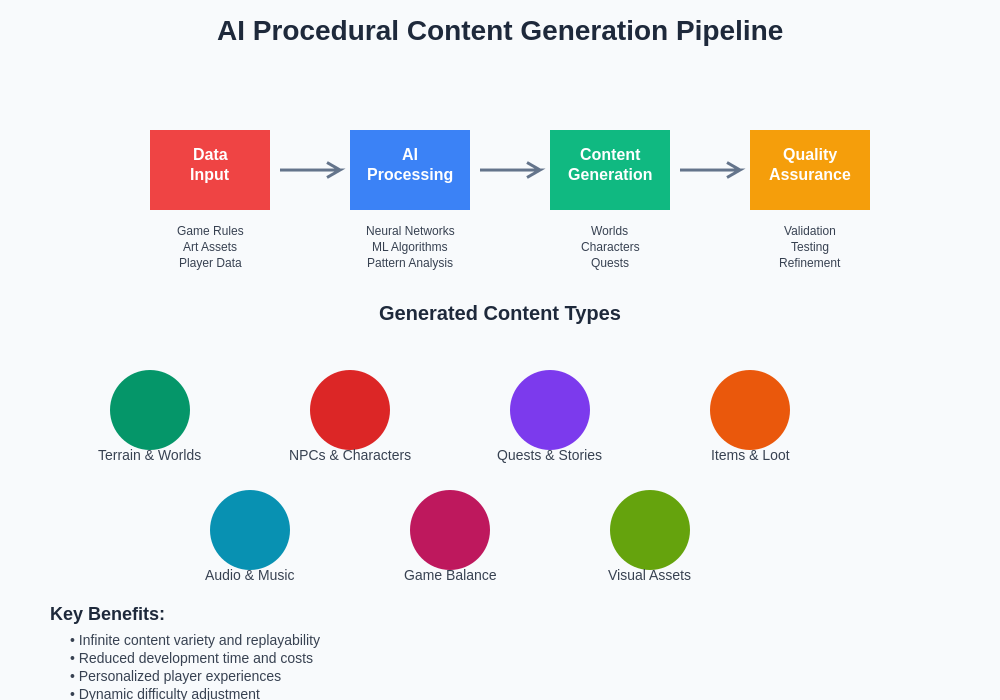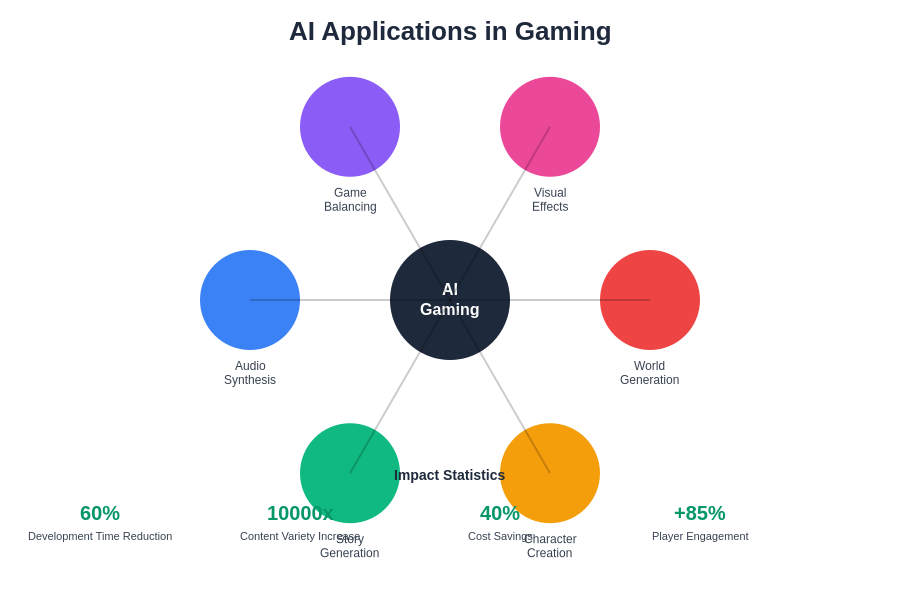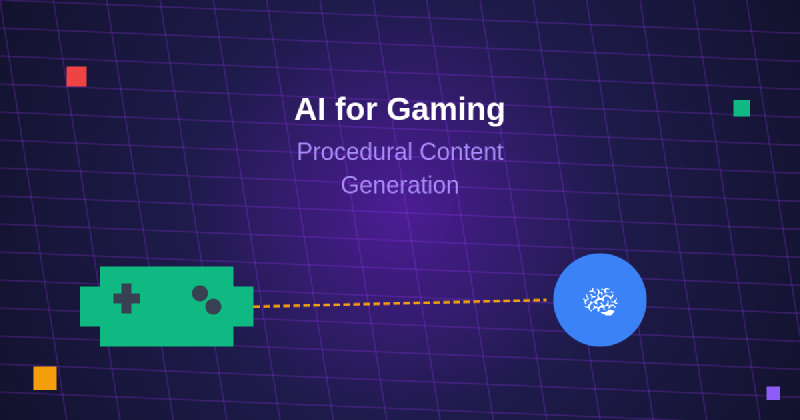The gaming industry stands at the precipice of a revolutionary transformation driven by artificial intelligence and procedural content generation technologies that are fundamentally reshaping how digital worlds are conceived, created, and experienced by players worldwide. This technological evolution represents far more than a mere advancement in development tools; it embodies a paradigm shift that promises to deliver infinite, personalized gaming experiences while dramatically reducing development costs and timelines for game studios of all sizes.
Explore the latest AI gaming innovations to witness the cutting-edge developments that are pushing the boundaries of what’s possible in interactive entertainment. The convergence of sophisticated machine learning algorithms with creative game design principles has opened unprecedented possibilities for creating dynamic, responsive gaming environments that adapt and evolve based on player behavior, preferences, and engagement patterns.
The Evolution of Procedural Content Generation
Procedural content generation in gaming has evolved from simple random number generation algorithms to sophisticated artificial intelligence systems capable of creating complex, coherent, and engaging game content that rivals hand-crafted experiences. Early implementations of procedural generation were limited to basic terrain generation and simple dungeon layouts, but modern AI-driven approaches can generate entire civilizations, intricate storylines, realistic characters, and dynamic ecosystems that respond intelligently to player actions and environmental changes.
The transformation from algorithmic to AI-driven procedural generation represents a quantum leap in capability and sophistication. Where traditional procedural systems relied on predetermined rules and mathematical formulas to generate content, modern AI systems can learn from existing content, understand player preferences, and create novel experiences that maintain artistic coherence while providing endless variety and replayability.
Contemporary AI procedural generation systems utilize advanced neural networks, machine learning models, and deep learning architectures to analyze vast datasets of existing game content, player behavior patterns, and creative design principles. These systems can then synthesize this knowledge to generate new content that not only meets technical requirements but also maintains the aesthetic, thematic, and gameplay consistency that defines exceptional gaming experiences.
Transforming World Building and Environment Design
The application of AI-driven procedural generation to world building and environment design has revolutionized how game developers approach the creation of vast, immersive gaming worlds. Traditional world creation required massive teams of artists, designers, and level architects working for years to craft detailed environments, but AI systems can now generate expansive, detailed worlds in a fraction of the time while maintaining artistic quality and gameplay functionality.
Modern AI world generation systems can create diverse biomes, realistic geological formations, dynamic weather patterns, and intricate ecosystem interactions that evolve over time based on player actions and environmental factors. These systems understand the relationships between different environmental elements, ensuring that generated worlds feel natural and believable rather than random or disjointed.
Harness the power of AI tools like Claude for game development planning and procedural content strategy development that can help define the parameters and goals for your AI-driven content generation systems. The integration of AI-powered planning tools with procedural generation technology creates a comprehensive development ecosystem that supports both creative vision and technical implementation.
The sophistication of modern AI world generation extends beyond simple terrain creation to encompass complex urban environments, architectural structures, and cultural artifacts that reflect the history, demographics, and technological advancement of virtual civilizations. These systems can generate cities with realistic urban planning, transportation networks, and architectural styles that evolve organically based on simulated historical events and cultural influences.

The comprehensive pipeline for AI-driven procedural content generation demonstrates the systematic approach required to transform raw data inputs into polished gaming experiences. This process integrates multiple AI technologies and quality assurance measures to ensure that generated content meets both technical requirements and creative standards.
Revolutionizing Character Creation and Development
Artificial intelligence has transformed character creation from a labor-intensive manual process into a dynamic, intelligent system capable of generating diverse, compelling characters with unique personalities, backstories, and behavioral patterns. AI-driven character generation systems can create non-player characters that feel genuinely alive, with complex motivations, realistic dialogue patterns, and adaptive behavior that responds to player interactions and story developments.
The advancement in AI character generation encompasses both visual design and personality development, creating characters that are not only visually distinct but also behaviorally unique. These systems can generate character appearances that reflect their backgrounds, cultures, and roles within the game world while ensuring visual diversity and avoiding repetitive or generic character designs.
Modern AI character systems utilize natural language processing and behavioral modeling to create dialogue that feels authentic and contextually appropriate. Characters generated through these systems can engage in meaningful conversations, remember previous interactions with players, and adapt their communication styles based on relationship development and story progression. This level of sophistication creates more immersive and emotionally engaging gaming experiences that encourage deeper player investment in character relationships and story outcomes.
Dynamic Narrative Generation and Storytelling
The integration of AI into narrative generation has opened new frontiers in interactive storytelling, enabling the creation of dynamic, branching narratives that adapt to player choices while maintaining narrative coherence and emotional impact. AI-driven storytelling systems can generate quest lines, dialogue sequences, and plot developments that respond to player actions, creating personalized story experiences that feel crafted specifically for individual players.
These advanced narrative systems understand story structure, character development, and thematic consistency, allowing them to generate complex storylines that maintain literary quality while providing infinite variation. The AI can create meaningful consequences for player choices, develop character relationships over time, and generate subplot threads that weave together into cohesive, engaging narratives.
The sophistication of AI narrative generation extends to emotional modeling and player psychology, enabling systems to adjust story pacing, conflict intensity, and character interactions based on player engagement patterns and emotional responses. This personalization creates more immersive storytelling experiences that resonate with individual players while maintaining the artistic integrity and thematic coherence that define exceptional interactive narratives.
Enhancing Audio Design and Music Composition
Procedural audio generation represents one of the most exciting applications of AI in gaming, offering the potential for dynamic, responsive soundscapes that adapt to gameplay situations, player actions, and environmental changes in real-time. AI-driven audio systems can generate ambient soundscapes, musical compositions, and sound effects that enhance immersion while reducing the storage requirements and licensing costs associated with traditional audio assets.
Modern AI audio generation systems can create musical compositions that adapt to gameplay intensity, player progress, and emotional context, providing seamless transitions between different musical themes and maintaining appropriate mood throughout the gaming experience. These systems understand musical theory, composition principles, and genre conventions, enabling them to generate high-quality audio content that enhances rather than distracts from gameplay.
Enhance your AI research capabilities with Perplexity for comprehensive information gathering about emerging audio AI technologies and their applications in game development. The rapid advancement of AI audio generation technology requires continuous learning and adaptation to leverage the latest capabilities effectively.
The application of AI to sound effect generation has enabled the creation of dynamic audio environments where sounds respond intelligently to player actions, environmental conditions, and gameplay context. These systems can generate realistic footsteps that adapt to different surface materials, weather sounds that respond to environmental conditions, and interactive audio elements that enhance player immersion and engagement.
Optimizing Game Balance and Difficulty Adjustment
AI-driven procedural systems have revolutionized game balance and difficulty adjustment by enabling dynamic, real-time optimization based on player performance, engagement metrics, and learning patterns. Traditional game balancing required extensive playtesting and manual adjustment, but AI systems can continuously monitor player behavior and adjust game parameters to maintain optimal challenge levels and engagement.
These intelligent balancing systems can modify enemy behavior, resource distribution, puzzle complexity, and reward structures to ensure that players remain engaged without becoming frustrated or bored. The AI analyzes player performance patterns, identifies areas of difficulty or disengagement, and makes subtle adjustments that maintain game flow while preserving the intended gameplay experience.
The sophistication of AI balancing systems extends to long-term player retention and progression optimization. These systems can identify when players might be at risk of abandoning the game and implement targeted interventions such as adjusted difficulty curves, personalized content recommendations, or modified reward schedules that encourage continued engagement and progression.
Personalizing Gaming Experiences Through AI
The personalization capabilities of AI-driven procedural generation enable the creation of gaming experiences tailored to individual player preferences, playstyles, and engagement patterns. These systems can analyze player behavior, identify preferences and patterns, and generate content that aligns with individual player interests while maintaining game balance and artistic coherence.
AI personalization systems can modify various aspects of the gaming experience, including content difficulty, narrative themes, character interactions, visual aesthetics, and gameplay mechanics, creating unique experiences for each player while maintaining the core game identity. This level of personalization increases player engagement, satisfaction, and retention while providing developers with valuable insights into player preferences and behavior patterns.
The implementation of AI personalization extends beyond content generation to encompass user interface adaptation, control scheme optimization, and accessibility features that adjust automatically based on player needs and preferences. These systems can identify players who might benefit from alternative control schemes, visual aids, or gameplay modifications and implement these changes transparently to improve the overall gaming experience.
Technical Implementation and Development Considerations
The successful implementation of AI-driven procedural content generation requires careful consideration of technical architecture, performance optimization, and integration with existing game development workflows. Modern AI systems demand significant computational resources during training phases but can be optimized for real-time generation during gameplay through techniques such as model compression, distributed processing, and intelligent caching strategies.
Development teams must balance the creative potential of AI generation with practical considerations such as memory usage, processing requirements, and content quality assurance. The integration of AI systems into game development pipelines requires specialized expertise in machine learning, data science, and AI model optimization, necessitating either internal capability development or strategic partnerships with AI technology providers.
The technical implementation of AI procedural generation also involves considerations of content validation, quality control, and creative oversight to ensure that generated content meets artistic standards and gameplay requirements. Hybrid approaches that combine AI generation with human creative oversight often provide the best balance between efficiency and quality control.
Industry Impact and Market Transformation
The adoption of AI-driven procedural content generation is transforming the gaming industry by enabling smaller development teams to create expansive gaming experiences that previously required large studios and substantial budgets. This democratization of game development capabilities is fostering innovation and enabling independent developers to compete more effectively with established industry players.
The market impact of AI procedural generation extends to business model innovation, enabling new approaches to content delivery, player engagement, and monetization. Games powered by AI generation can provide virtually unlimited content, supporting long-term player engagement and subscription-based revenue models that provide sustainable income streams for developers.
The industry transformation also encompasses changes in required skill sets and development methodologies, with increasing demand for professionals who understand both game design principles and AI technology implementation. Educational institutions and professional development programs are adapting to prepare the next generation of game developers for an AI-integrated industry landscape.

The diverse applications of artificial intelligence in gaming demonstrate the technology’s versatility and transformative potential across multiple aspects of game development and player experience. From world generation to audio synthesis, AI technologies are creating new possibilities for immersive, personalized gaming experiences that adapt to individual player preferences and behaviors.
Future Possibilities and Emerging Trends
The future of AI-driven procedural content generation in gaming promises even more sophisticated capabilities, including real-time collaborative content creation between AI and human creators, cross-game content sharing and adaptation, and the emergence of truly autonomous game worlds that evolve independently of human intervention. These advances will further blur the lines between developer-created and AI-generated content.
Emerging trends in AI gaming technology include the integration of large language models for more sophisticated narrative generation, computer vision systems for procedural visual asset creation, and reinforcement learning algorithms that enable AI systems to improve content quality based on player feedback and engagement metrics. These technological advances will continue to expand the possibilities for AI-driven game development.
The convergence of AI procedural generation with other emerging technologies such as virtual reality, augmented reality, and cloud computing promises to create entirely new categories of gaming experiences that adapt and evolve in real-time based on player behavior, environmental factors, and social interactions. These integrated systems will enable gaming experiences that are truly unique and personally meaningful for each player.
The continued evolution of AI procedural generation technology will ultimately transform gaming from a medium of fixed experiences to a dynamic, living ecosystem where content creation and player experience are seamlessly integrated through intelligent, responsive AI systems that understand and anticipate player needs while maintaining the creative vision and artistic integrity that define exceptional interactive entertainment.
Disclaimer
This article is for informational purposes only and does not constitute professional advice regarding game development or AI implementation strategies. The views expressed are based on current understanding of AI technologies and their applications in gaming. Readers should conduct their own research and consider their specific development requirements when implementing AI-driven procedural content generation systems. The effectiveness and appropriateness of AI gaming technologies may vary depending on project scope, target audience, and technical constraints.
